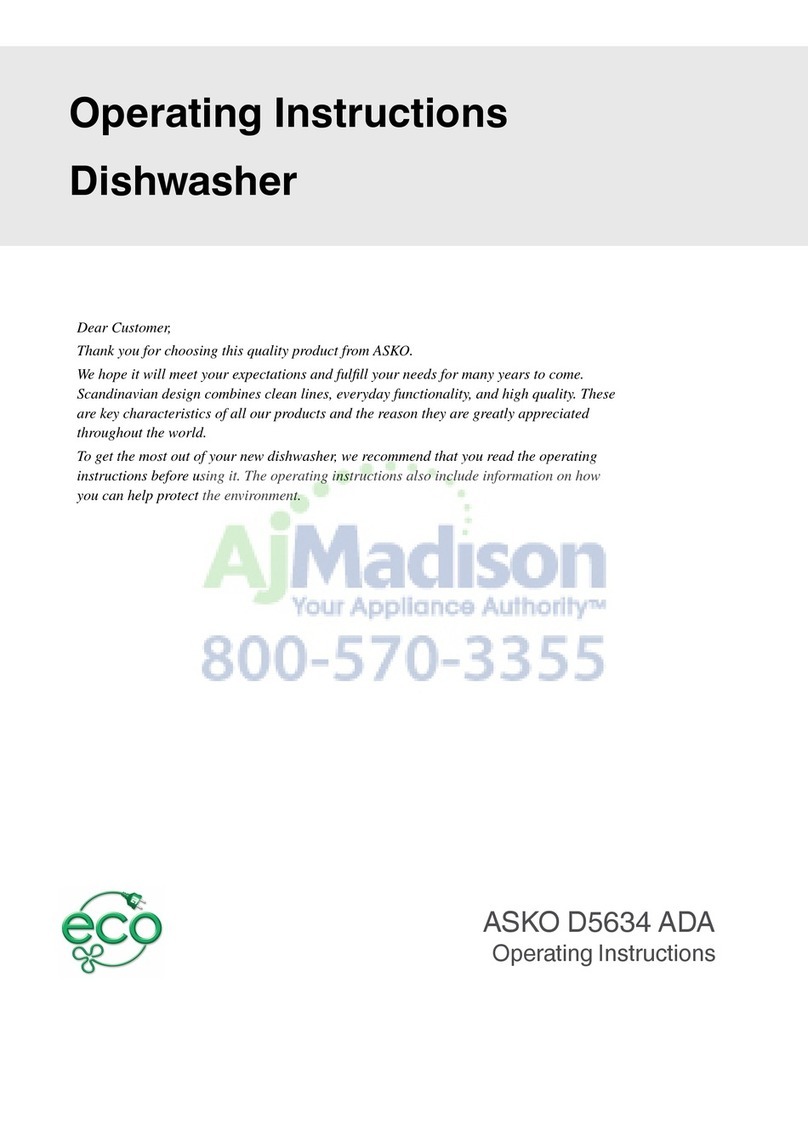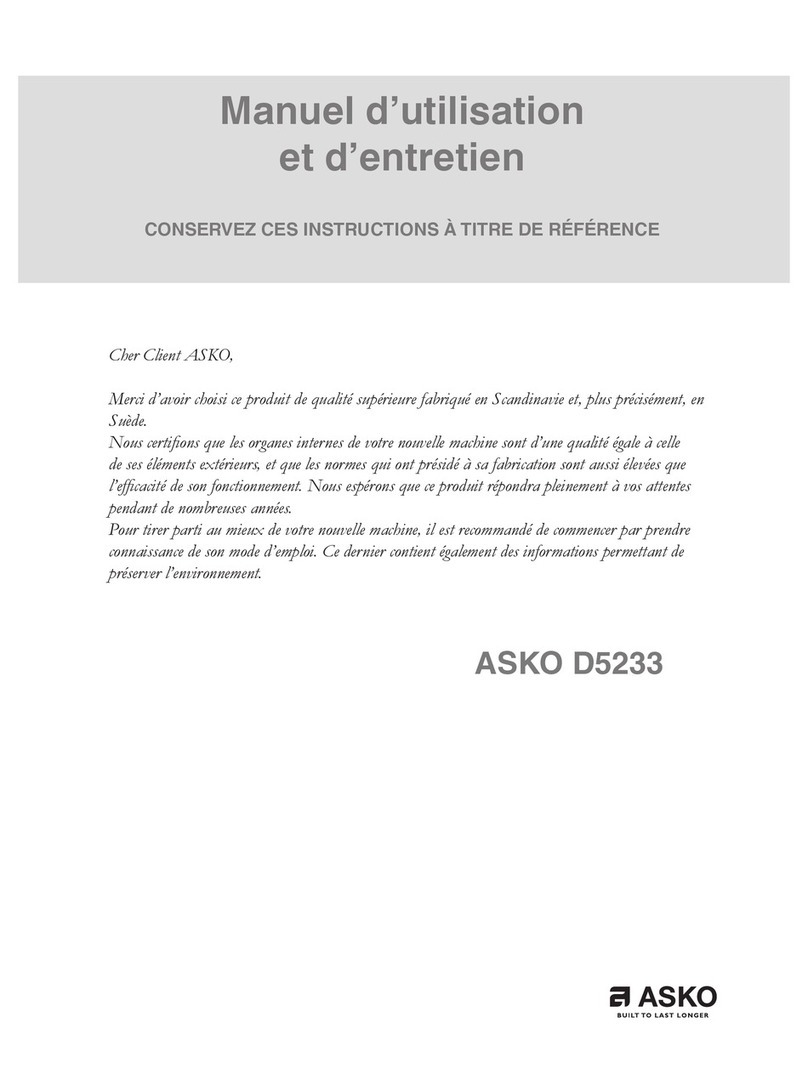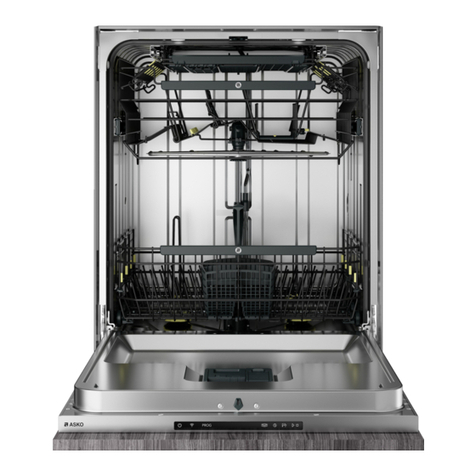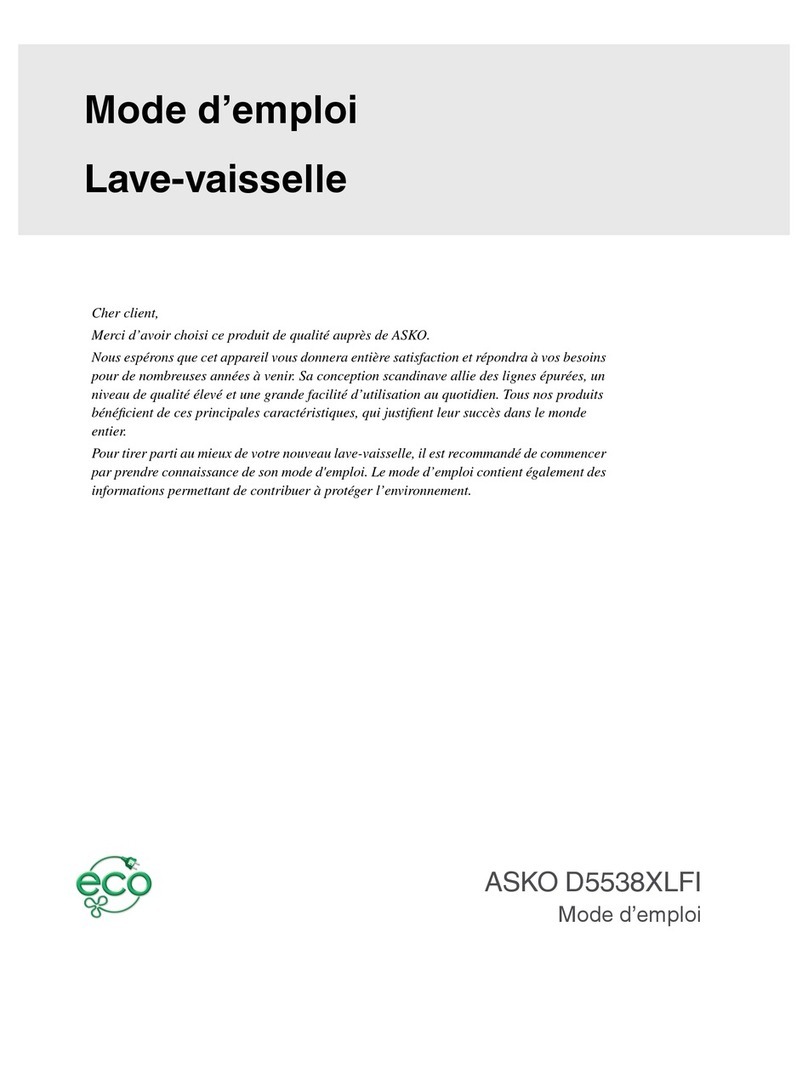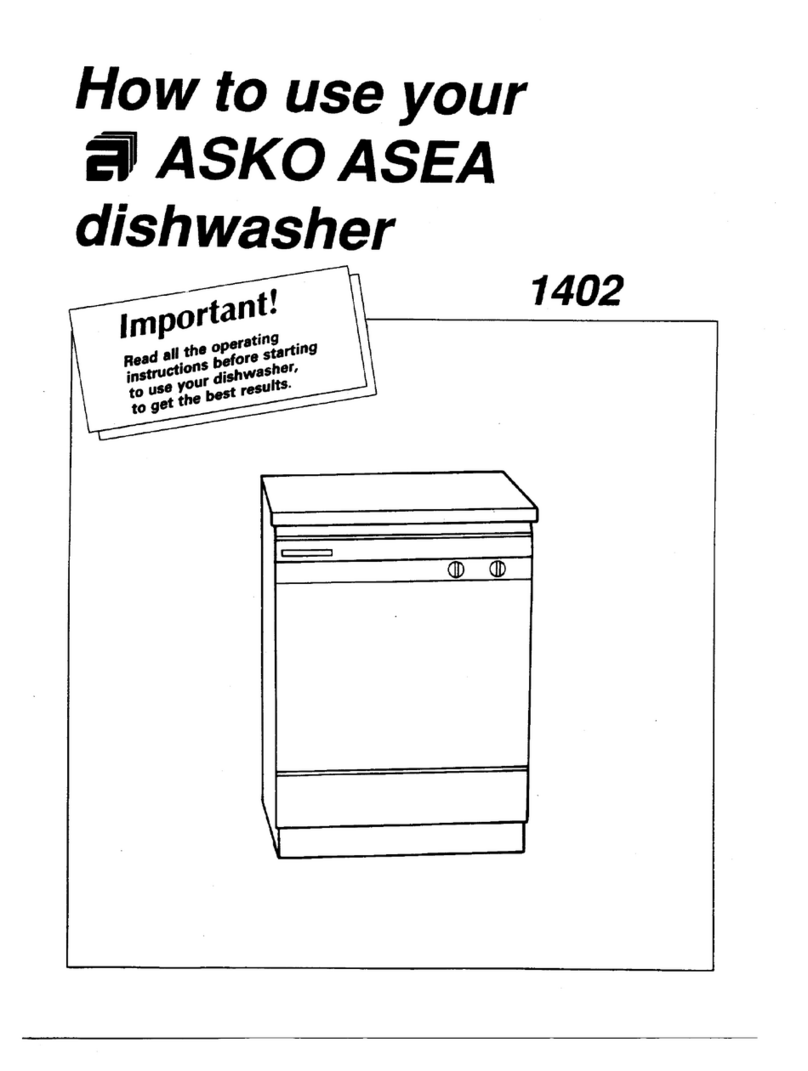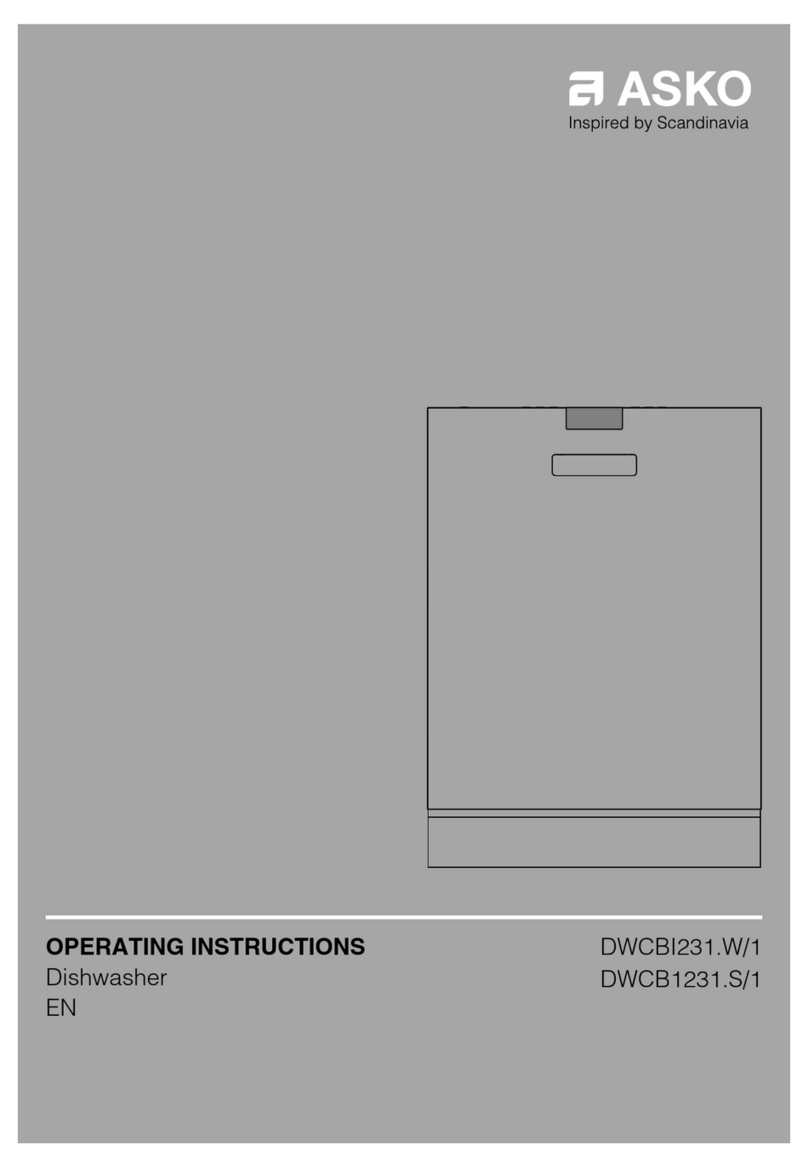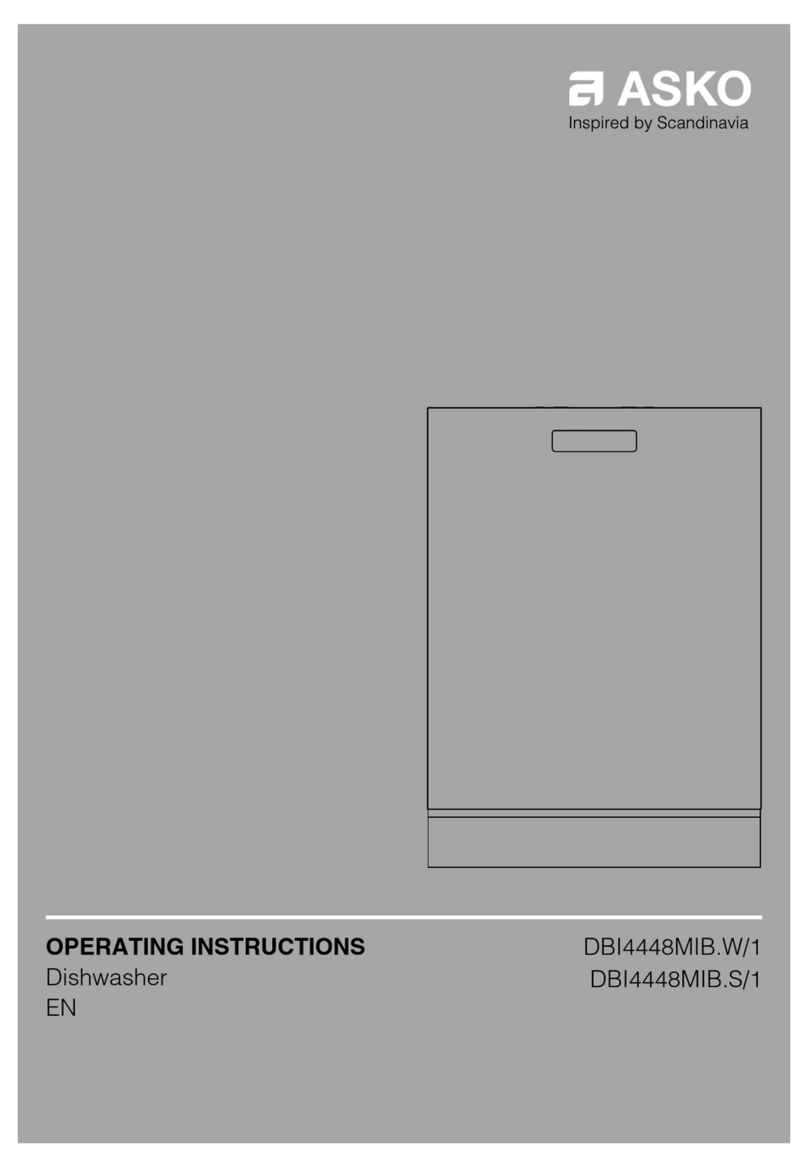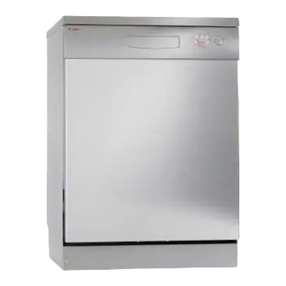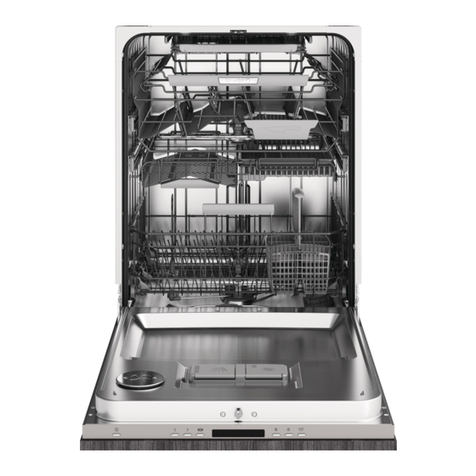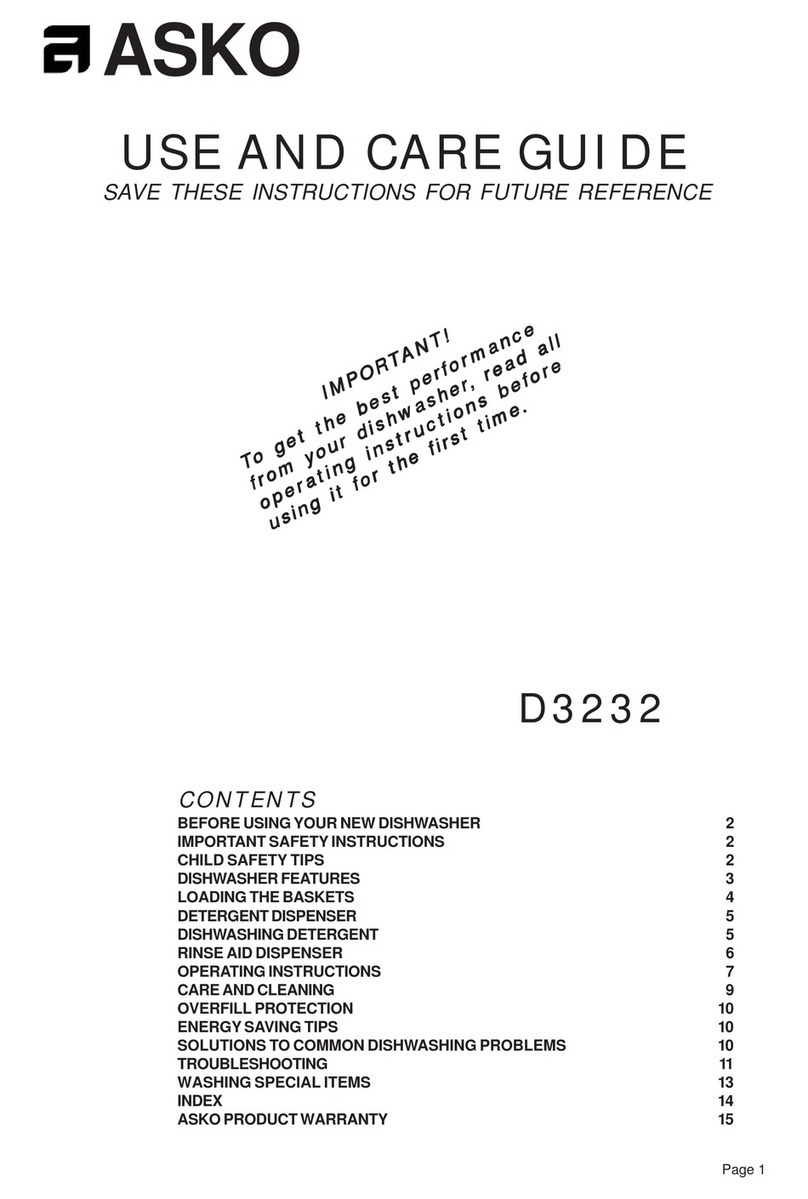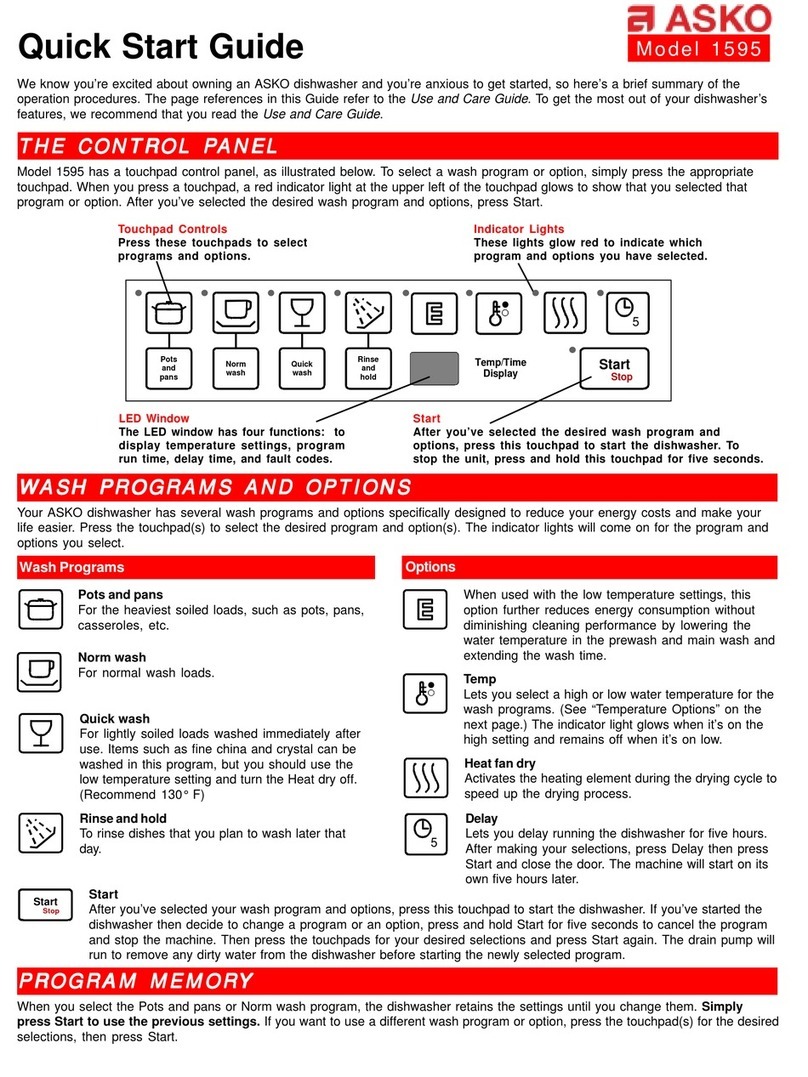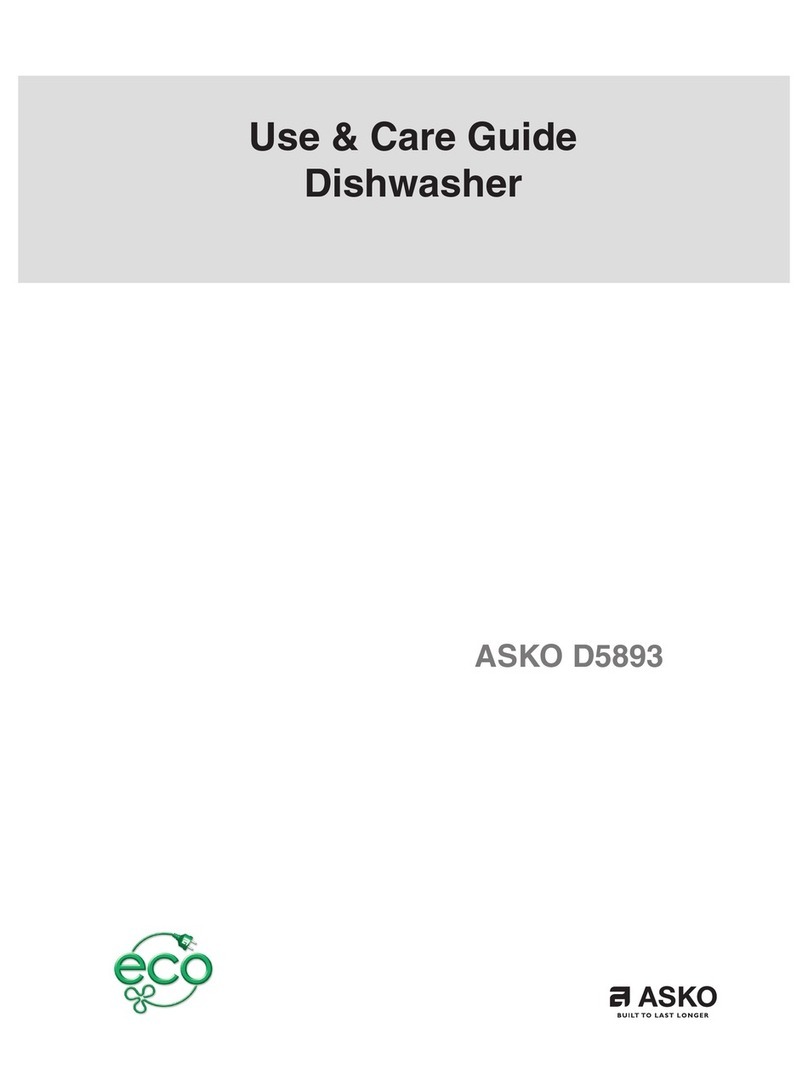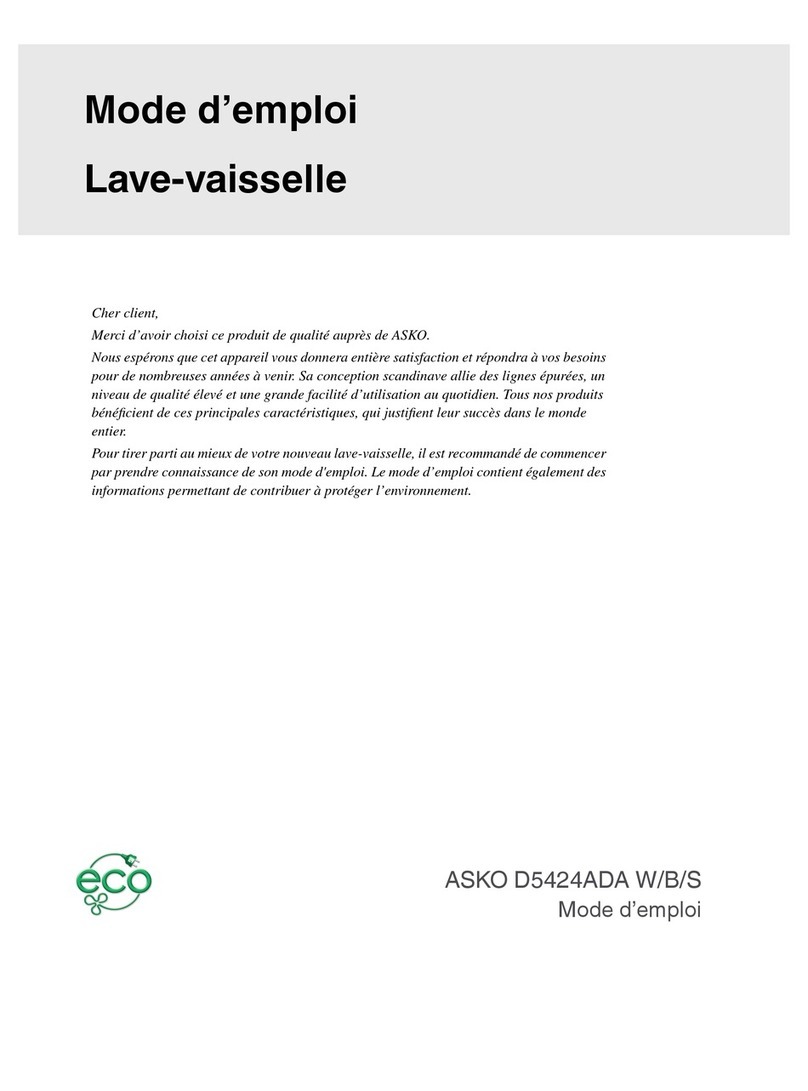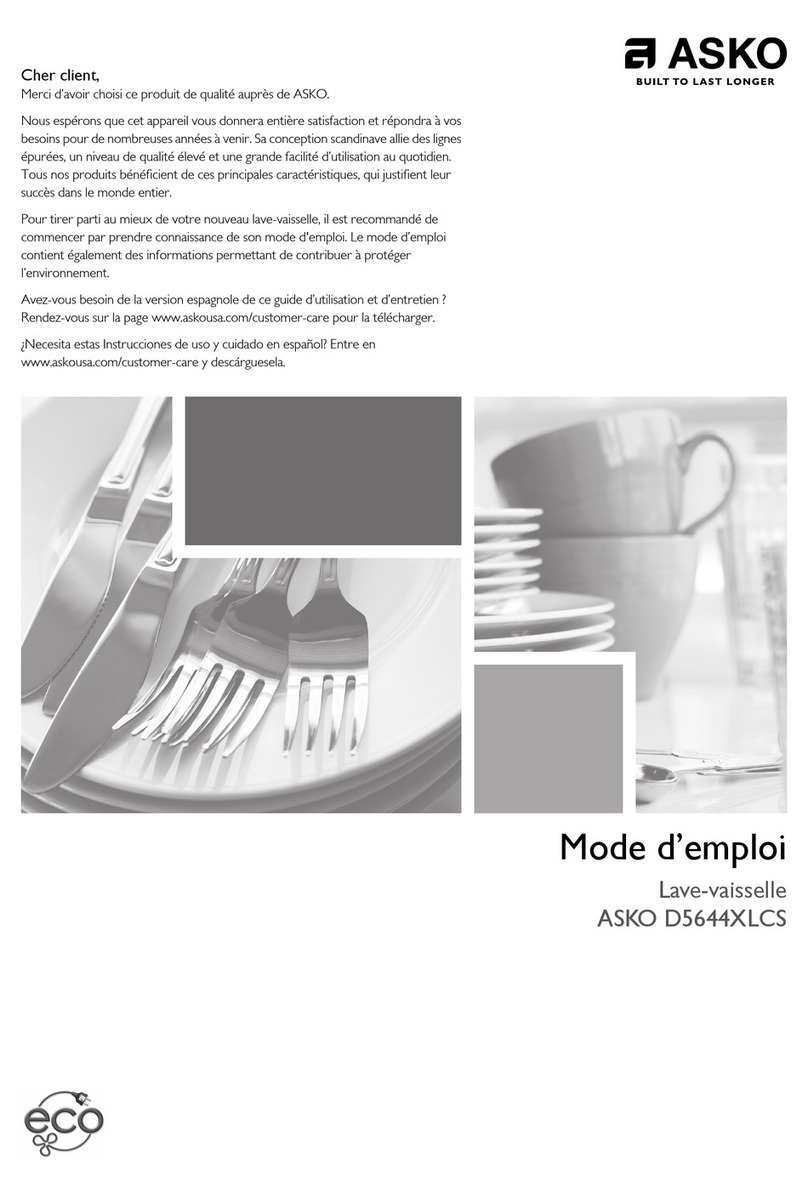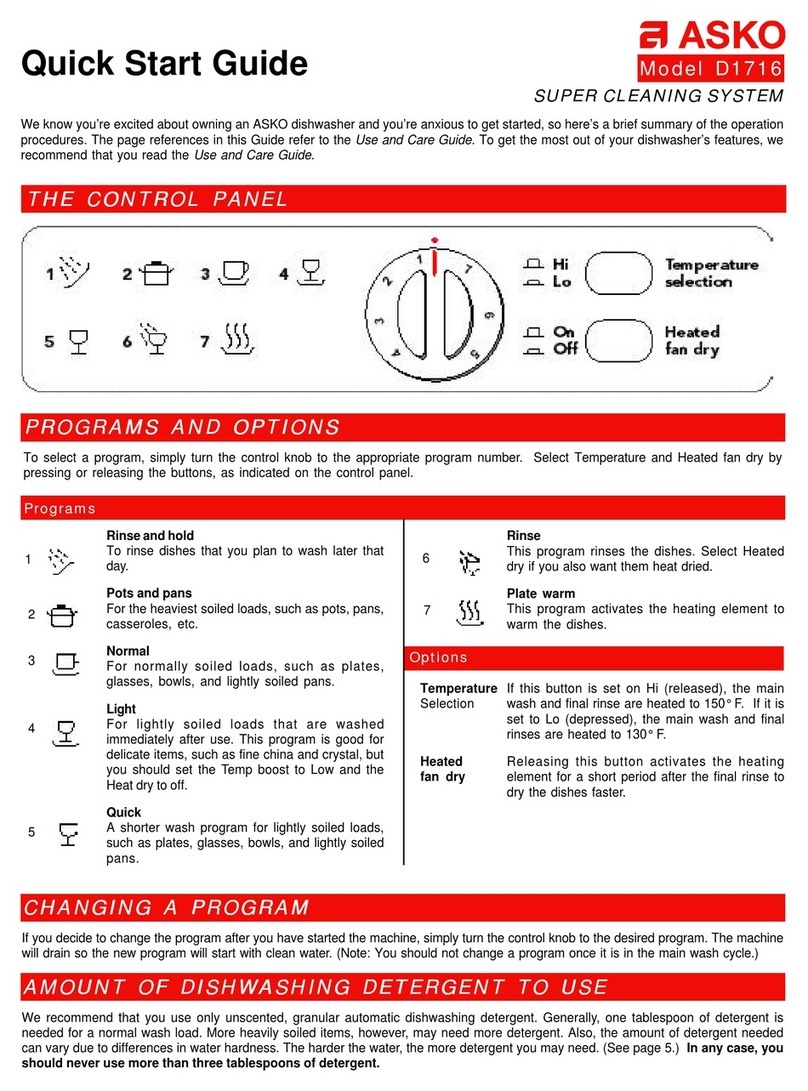Service manual DW90
10
Inlet valve
The inlet valve has an electrical connector
that is coded to ensure it is not mixed up. It is
fitted with a filter, which can be removed for
cleaning. Both single and safety valves are used
as inlet valves. The inlet valve contains a filter
to stop particles then a flow limiter to limit
the flow to a maximum of 4 L (1 gallon)/min.
It opens when the water pressure exceeds 0.3
bar (4.3 psi) and provides full flow at about 2
bar (29 psi). It has a pressure range of 0.3 bar
(4.3 psi) to 10 bar (145 psi). The inlet valve is
fitted to the air gap and can be replaced from
the rear of the machine.
Purpose: To ensure that the machine
is supplied with water for the different
dishwashing cycles.
Safety valve
The safety valve has two independent valve seats,
each controlled by a separate electromagnet. The
valve seats are connected in series. This doubles
the safety factor. The electromagnets are also
connected in series (electrically), which means each
magnet’s rated voltage is half the mains voltage (e.g.,
a 230 V valve = 2 x 115 V coils)
Single valve
The single valve comprises an electromagnet
and a valve seat.
Components and function description
Here we describe the function and
specification of the most important
components. Certain components are found
only in more highly specified machines or in
particular markets. See the Troubleshooting
section for fault and information codes.
CU, Control Unit
The CU, or Control Unit, is a unit that functions
as both a control panel and a logic component.
The control panel is fitted with a display and touch
buttons for selecting programs, options and Start/
Stop. The control panel is an integrated part of
the CU and cannot be replaced separately. The
logic component manages functions needed for
dishwashing programs and diagnosis. The CU
has an internal power supply for the logic. In the
event of a fault, the CU can diagnose a number of
components and functions and display fault codes.
To facilitate troubleshooting the service menu
includes a component diagnostics function, which
activates the outputs in a particular sequence.
Accelerometer
The control unit in DW90.2 contains an accelerometer,
a sensor that senses position and acceleration. It controls
the touch buttons and the brightness of the light. The
accelerometer turns off at a specific angle to avoid causing
a distraction when seen from the worktop. It is calibrated
when the door is closed.
If this symbol appears on the display
the door is not open enough. Open
the door until the display lights up.
Component description
